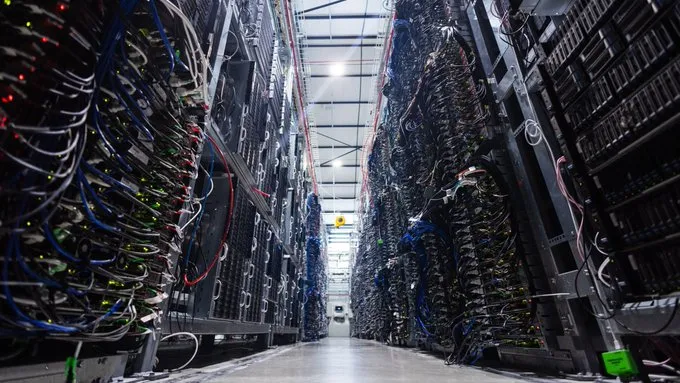Can AI Really Help Solve the Climate Crisis?
The rise of AI climate tech has sparked a wave of cautious optimism across the sustainability and tech sectors. As the climate crisis intensifies, many wonder if artificial intelligence can be a true game-changer—or if it’s just another overhyped solution in a sea of promises. So how hopeful should we actually be about AI’s role in climate change mitigation? In this post, we break down the facts, current innovations, and limitations to help you understand where things truly stand with AI climate technology in 2025. Whether you're a climate advocate, tech enthusiast, or policy maker, this is your guide to separating realistic promise from hype.
Image : GoogleUnderstanding AI Climate Tech: What It Really Means
AI climate tech refers to the use of artificial intelligence and machine learning to combat climate change. This includes everything from optimizing energy grids and predicting extreme weather events to managing carbon emissions and accelerating scientific research into clean technologies. The idea is that AI can analyze massive amounts of environmental data far faster and more accurately than humans, leading to smarter decisions and faster interventions.
Some exciting applications already in use include AI-powered climate models, satellite data analysis for deforestation, smart farming systems that reduce water and fertilizer use, and AI-driven predictions for wildfire risk. Microsoft’s Project Premonition, for example, uses AI to track and predict vector-borne disease patterns linked to climate shifts. Similarly, Google DeepMind’s AI models help reduce energy consumption in data centers by fine-tuning cooling systems in real time.
By 2025, the scope of AI in climate-focused applications has expanded considerably, thanks to more powerful models, better access to open environmental data, and rising global urgency. However, it’s essential to understand that while these tools are promising, they’re not standalone solutions.
The Hype vs. the Reality: Is AI Enough?
The tech industry has a tendency to oversell AI solutions, and climate tech is no exception. While ai climate tech does offer significant potential, it is not a silver bullet. For starters, AI systems rely heavily on energy and hardware infrastructure that can be carbon-intensive to produce and operate—especially large language models and deep learning systems. This raises questions about the net positive impact of AI when not deployed responsibly.
Moreover, AI’s effectiveness is only as good as the data it learns from. Inaccurate, biased, or incomplete environmental data can lead to flawed predictions and ineffective outcomes. For example, AI tools designed to optimize supply chains or forecast agricultural outputs may fail in developing regions where data gaps are common. Without proper oversight, AI can also reinforce existing inequities in how climate impacts and resources are distributed.
Another challenge lies in the governance and accessibility of AI solutions. Many powerful AI climate tools are controlled by private companies, which limits transparency and public access. OpenAI, Google, and IBM have made strides in climate-focused research, but much of the implementation still depends on partnerships, policies, and public-private cooperation.
So, while the hype around ai climate tech is partially justified, it needs to be tempered with realism. This technology is a critical support system—not a magical fix for global warming.
Where AI Is Making a Real Impact in 2025
Despite the limitations, there are areas where AI is already proving its value in the climate fight. In 2025, AI plays an active role in the following:
-
Smart Grid Management: AI algorithms help balance electricity supply and demand in real-time, supporting the integration of renewables like solar and wind. This has improved grid stability and reduced fossil fuel reliance in countries like Germany, Kenya, and South Korea.
-
Climate Modeling and Early Warning Systems: AI accelerates the development of high-resolution climate models that predict extreme weather, floods, and droughts with greater accuracy. Governments use these models to prepare more effectively, saving lives and infrastructure.
-
Carbon Accounting and ESG Compliance: AI tools now streamline corporate environmental reporting by tracking emissions, resource use, and sustainability goals. This is particularly useful for companies navigating new global carbon disclosure laws introduced in 2024.
-
Precision Agriculture: Farmers use AI tools to monitor soil health, predict harvest outcomes, and optimize water and fertilizer usage. This reduces emissions while boosting yields—a win-win for food security and climate resilience.
-
AI in Climate Finance: Financial institutions use machine learning to identify green investment opportunities and climate-related risks. These tools help direct capital toward sustainable projects with measurable environmental outcomes.
All these examples highlight the supportive role AI plays in amplifying human-led climate action. But it’s also clear that tech alone won’t fix systemic issues like overconsumption, political inertia, or environmental injustice.
A Future with AI Climate Tech: Hope, With Boundaries
So, can we be hopeful about ai climate tech? The short answer is yes—with boundaries. The advancements in AI and their integration into climate strategies are both real and impactful. But optimism must come with accountability, transparency, and grounded expectations.
Policymakers need to regulate AI use in climate tech to ensure it’s used ethically and equitably. Developers must design AI tools with sustainability in mind—minimizing energy consumption and prioritizing environmental data accuracy. And the public needs to remain informed and critical, pushing for open-source solutions and inclusive climate policies.
In 2025 and beyond, AI can be a force multiplier in our fight against climate change—but only if it's paired with decisive human action, systemic reform, and community-level resilience. AI alone won't save the planet, but it can help us make smarter, faster, and more effective decisions on the path to climate stability.


Post a Comment